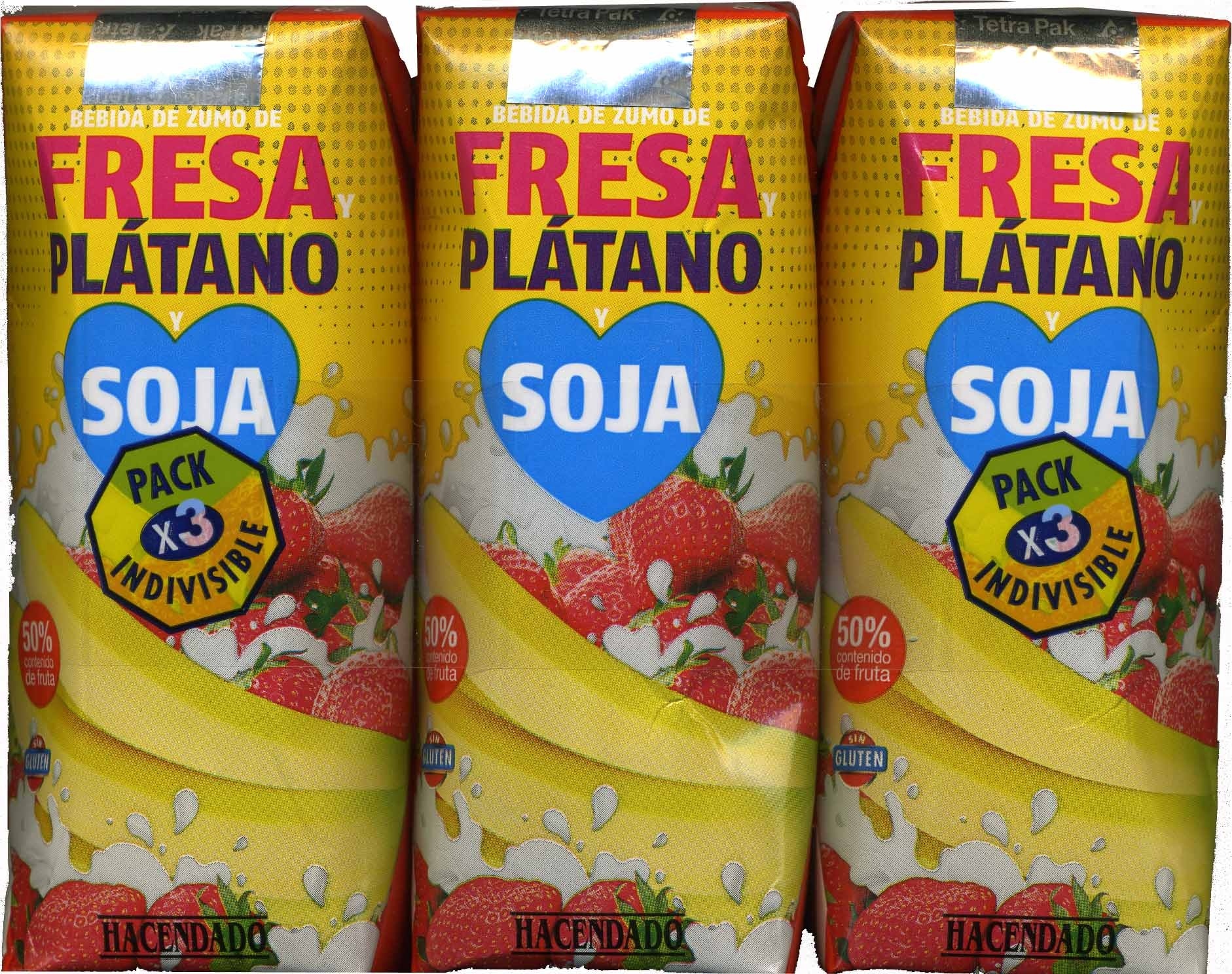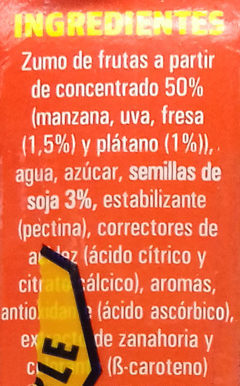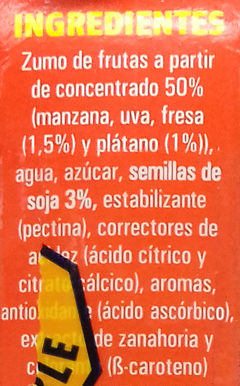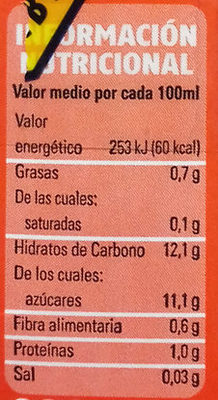Bebida de soja fresa plátano - Hacendado - 990 ml (3 x 330 ml)
Aquesta pàgina del producte no està completa. Podeu ajudar a completar-la editant-la i afegint-hi més dades a partir de les fotos ja disponibles, o fent-ne més amb l'aplicació de androide o iPhone / iPad. Gràcies!
×
Codi de barres: 8480000396174 (EAN / EAN-13)
Nom comú: Bebida refrescante mixta pasteurizada de zumo de fresa y plátano a partir de concentrado y soja. Contenido en fruta: 50%
Quantitat: 990 ml (3 x 330 ml)
Empaquetament: Tetra Brik
Marques: Hacendado
Categories: Aliments i begudes amb base vegetal, Begudes, Aliments amb base vegetal, Llegums i derivats, en:Dairy substitutes, Substitutius de la llet, Begudes amb base vegetal, Begudes amb base de fruites, Begudes vegetals, Begudes de llegums, Begudes sense sucre, en:Fruit and plant-milk beverages, Beguda de soja, en:Fruit and soy beverages, Begudes ensucrades
Etiquetes, certificacions, premis:
Lliure de gluten, Vegetarià, Kosher, Vegà, FSC, Mix FSC, Sense lactosa, Unió Ortodoxa Kosher, es:50 % contenido de fruta

Llocs de fabricació o processament: Picanya, Valencia (provincia), Comunidad Valenciana, España
Codi de traçabilitat: ES 21.13376/V CE, DESARROLLOS ALIMENTARIOS FRESCOS INDUSTRIAL S.L., DAFSA - DESARROLLOS ALIMENTARIOS FRESCOS S.A., FSC-C014047
Enllaç a la pàgina del producte en el lloc oficial del productor: http://www.dafsa.es/portfolio/fresa-y-pl...
Botigues: Mercadona
Països on es va vendre: Espanya
Matching with your preferences
Entorn
Petjada de carboni
Empaquetament
Transport
Report a problem
Fonts de dades
Producte afegit per javichu
Última modificació de la pàgina del producte per 5m4u9.
La pàgina del producte, també editada per jgomez93, moon-rabbit, musarana, neptuno, roboto-app, teolemon, thaialagata.










